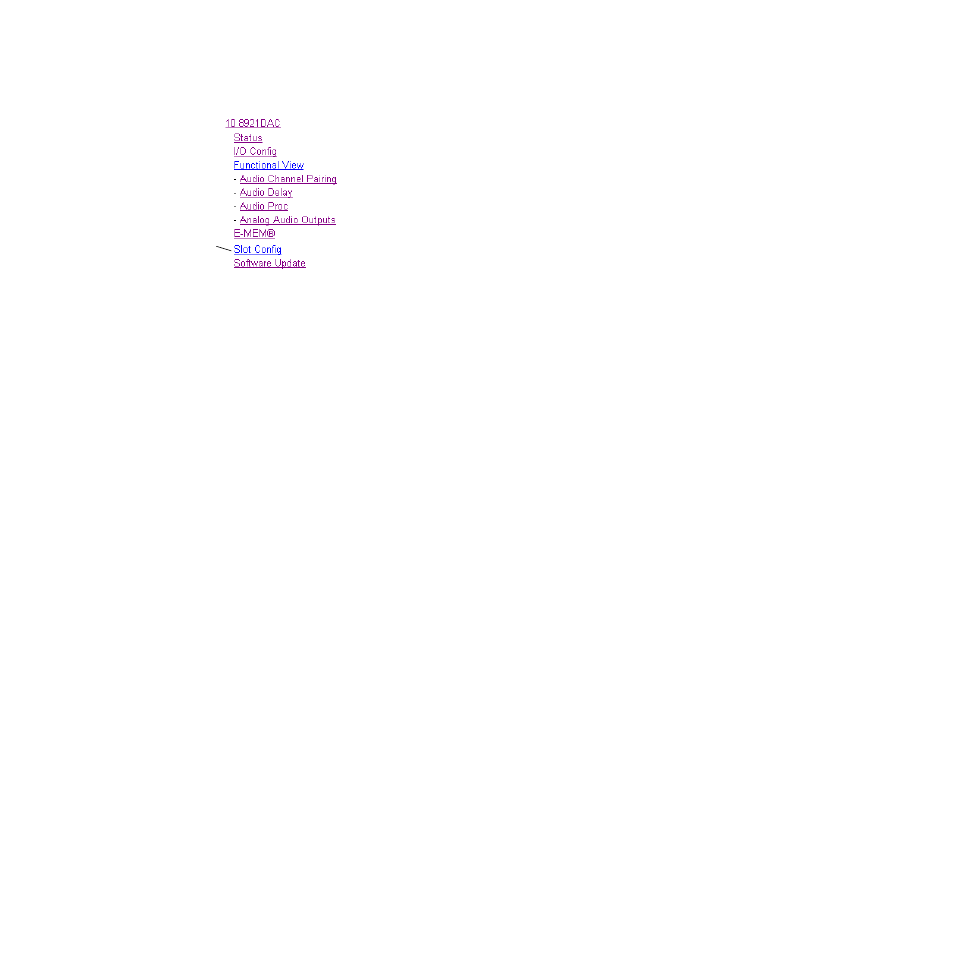Grass Valley 8921DAC User Manual
Page 37

8921DAC Instruction Manual
37
Configuration
Slot Config Page
Use the Slot Config page (
functions on the 8921DAC module:
•
Locate Module
– selecting Flash in the
Locate Module
pulldown flashes the
yellow COMM and CONF LEDs on the front of the module so it can be
located in the frame.
•
Slot Identification
– You may identify the module by typing a specific
name in the
Name
field. The assigned name is stored on the 8900NET
module and travels with the 8900NET module if it is moved to another
frame. Select
Default
to enter the factory default module name.
An asset identifier may be entered into the
Asset Tag
field for inventory
purposes (functionality requires 8900NET software 3.2.1 or later). The
asset tag will appear on the Status web page and can be used in the
Inventory function with the NetConfig Network application.
•
Slot Memory
– the slot configuration for each media module is automati-
cally saved periodically (once an hour) to the 8900NET module in that
frame. You may also select the
Learn Module Config
button at any time to
save the current configuration for this slot. The configuration is saved
on the 8900NET module. If the 8900NET module is removed or
powered down, the stored configurations are not saved.
When the
Restore upon Install
box has been checked, the current configu-
ration saved to this slot is saved as slot memory. When the current
module is removed and another module of the same type is installed,
the configuration saved to the 8900NET module will be downloaded to
the new module. The box must be checked before the current module
with the saved configuration is removed.
•
Frame Heath Reporting
– this function is not used on the current version of
8900NET software which controls this page.
•
Hardware Switch Controls
– a read-only status report of 8900NET module
switch settings for Module Status Reporting and Asynchronous Status
Reporting. These functions must be enabled for the following Slot
SNMP Trap Reports to function.
•
Slot SNMP Trap Reports
– displayed only when the SNMP Agent software
has been installed on the 8900NET module. Slot SNMP traps can be
enabled only when the hardware switches for Module Fault reporting
and Asynchronous Status reporting are in enabled on the 8900NET
module (dipswitch S1 segment 5 and dipswitch S2 segment 1).
The enabled SNMP traps will be reported to any SNMP manager that
is identified as an SNMP Report Destination in 8900NET configuration.
Trap severity is read-only hard-coded information that is interpreted
and responded to by the SNMP Manager software configuration.
SNMP reporting can be also be disabled for individual signal inputs on
the I/O Config web page.
Use
this
link
